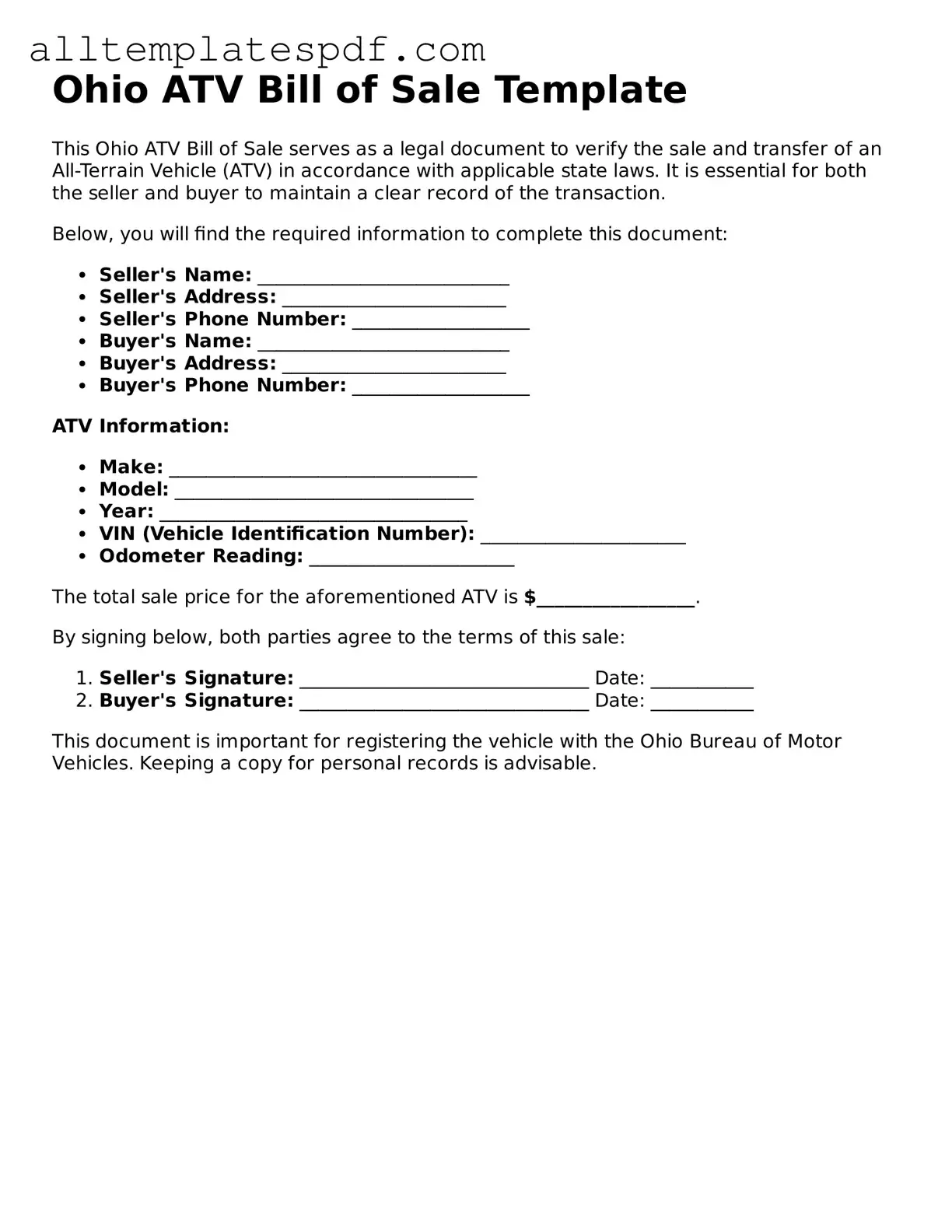Completing the Ohio ATV Bill of Sale form can be straightforward, but several common mistakes can lead to complications. One frequent error is failing to provide complete information about the all-terrain vehicle (ATV). Essential details such as the make, model, year, and Vehicle Identification Number (VIN) must be accurately recorded. Omitting any of this information can create confusion during the transfer of ownership.
Another mistake involves incorrect or missing signatures. Both the seller and the buyer must sign the document. If either party neglects to sign or if the signatures are illegible, the bill of sale may be considered invalid. It is crucial to ensure that all parties involved understand the importance of their signatures on the form.
People often forget to date the bill of sale. Including the date of the transaction is vital for record-keeping and legal purposes. A missing date can lead to disputes about when the sale occurred, which may affect the registration process with the Ohio Bureau of Motor Vehicles.
Some individuals misinterpret the requirement for a notary signature. While notarization is not mandatory for all transactions, certain situations may require it. Not understanding when a notary is necessary can result in an incomplete or unrecognized document.
Errors in the purchase price are also common. Buyers and sellers should agree on a price before filling out the form. If the price is recorded incorrectly, it can lead to issues with taxes and registration. Double-checking this information is essential to avoid complications.
Inaccurate contact information for both the buyer and seller can create problems later on. It is important to provide current addresses and phone numbers. This information is crucial for any follow-up communications or issues that may arise after the sale.
Some people neglect to include any liens on the ATV. If there is an outstanding loan or lien on the vehicle, it should be disclosed in the bill of sale. Failing to do so may lead to legal issues for the buyer after the purchase.
Another common mistake is not keeping a copy of the bill of sale. Both parties should retain a copy for their records. This document serves as proof of the transaction and may be needed for future reference.
People may also overlook the importance of checking local regulations regarding ATV sales. While the Ohio Bill of Sale is a standard form, additional requirements may exist depending on the county or municipality. Being unaware of these regulations can complicate the sale.
Finally, some individuals rush through the process without reviewing the completed form. Taking the time to carefully review all entries can prevent errors and ensure that the bill of sale is accurate and complete. Attention to detail is essential in this process.
